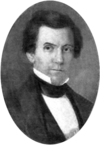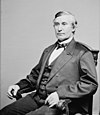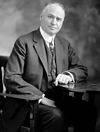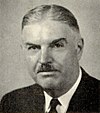List of members representing the district
| Member | Party | Tenure | Cong ress | Electoral history |
|---|---|---|---|---|
| District created January 26, 1837 | ||||
 Isaac E. Crary (Marshall) | Democratic | January 26, 1837 – March 3, 1841 | 24th 25th 26th | Elected in 1835. Re-elected in 1837. Re-elected in 1838. Retired. |
 Jacob M. Howard (Detroit) | Whig | March 4, 1841 – March 3, 1843 | 27th | Elected in 1840. Redistricted to the 1st district and lost re-election. |
| District inactive until after the 1910 United States census. | ||||
 Patrick H. Kelley (Lansing) | Republican | March 4, 1913 – March 3, 1915 | 63rd | Elected in 1912. Redistricted to the 6th district . |
| Seat inactive until after the 1960 United States census. | ||||
 Neil Staebler (Ann Arbor) | Democratic | January 3, 1963 – January 3, 1965 | 88th | Elected in 1962. Retired to run for Governor of Michigan. |
| Seat eliminated January 3, 1965 | ||||